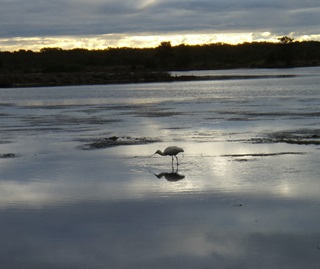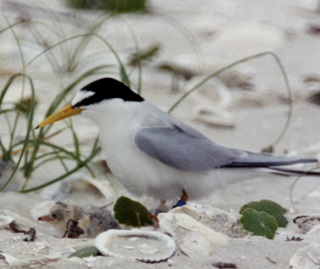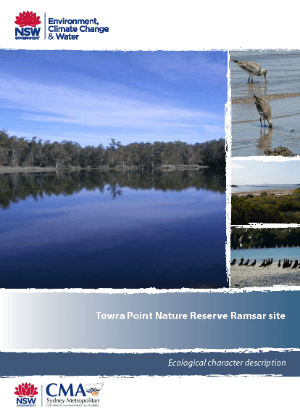 Towra Point Nature Reserve is on the southern shore of Botany Bay, about 16 kilometres from Sydney CBD. It supports the largest wetland of its type in the greater Sydney region.
Towra Point Nature Reserve is on the southern shore of Botany Bay, about 16 kilometres from Sydney CBD. It supports the largest wetland of its type in the greater Sydney region.
Why these wetlands were listed as a Ramsar site
Countries that sign up to the Ramsar Convention can nominate sites to be listed as Wetlands of International Importance (Ramsar sites). The site must meet at least 1 of 9 internationally accepted criteria.
Towra Point Nature Reserve was listed as a Ramsar site in 1984 because it meets the following criteria:
Criterion 2: Threatened species or ecological communities
Towra Point Nature Reserve supports three threatened species:
Criterion 3: Populations of plants and/or animals important for maintaining biodiversity of a particular bioregion
Towra Point Nature Reserve is an important area for maintaining the biodiversity of the Sydney region. Its seagrass beds, in conjunction with its mangrove and saltmarsh communities, provide critical shelter and food for juvenile fish and crustaceans.
It is also one of the most important migratory bird sites in NSW and an important breeding area for the endangered little tern.
Criterion 4: Supports species at a critical stage of their life cycle or provides refuge in adverse conditions
 Towra Point Nature Reserve provides critical roosting and feeding habitat for migratory shorebirds protected under international agreements. It also supports the little tern on Towra Spit.
Towra Point Nature Reserve provides critical roosting and feeding habitat for migratory shorebirds protected under international agreements. It also supports the little tern on Towra Spit.
Species of fish such as the common silver biddy, yellow bream and flat-tail mullet are found in large numbers at Towra Point and use the mangrove habitats during the vulnerable juvenile stage of their life cycle.
Criterion 8: Food source, nursery or migration path for fish
Towra Point Nature Reserve is a significant habitat and food source for at least 60 species of fish. They use the saltmarsh, mangroves and seagrass habitats in and next to the nature reserve for food and protection, and as a nursery habitat during the early stages in their life cycle.
The saltmarsh is important for providing habitat for different crab species, which release large numbers of larvae in the ebb tide.
How the site is managed
Management of this Ramsar site is guided by the following:
- the site’s Ramsar information sheet
- its ecological character description
- a plan of management for Towra Point Nature Reserve.
Threats to the Ramsar site
The main threats to this site’s ecological character include:
- introduced plants and animals
- altered hydrology
- urban and industrial development
- pollution
- weeds such as bitou bush, lantana and caulerpa
- foxes, which are a major threat to nesting little terns
- altered hydrology from dredging and port developments, which can cause beach erosion and loss of seagrasses in the site
- inappropriate recreational use
- mangrove encroachment
- climate change.


